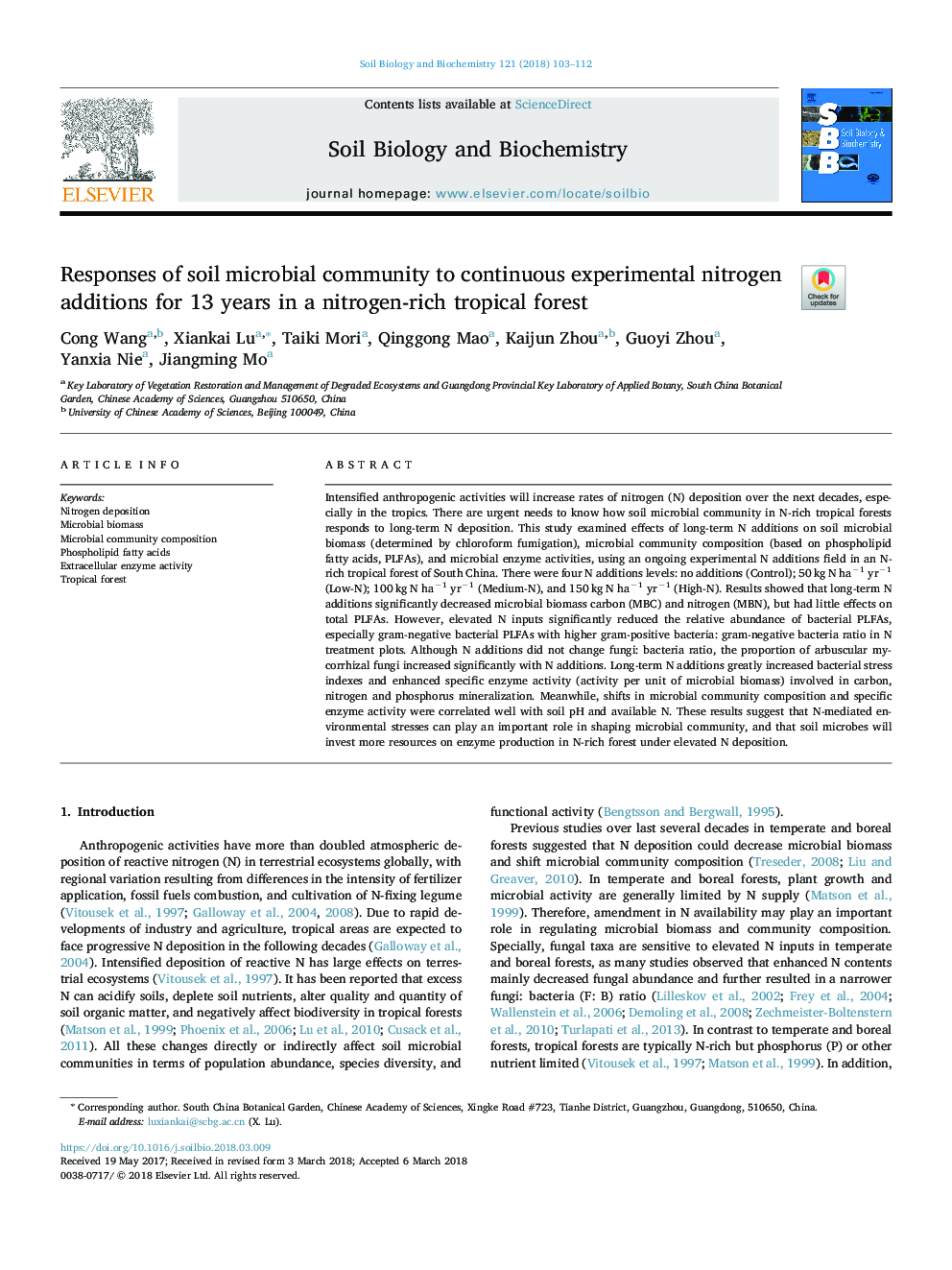| Article ID | Journal | Published Year | Pages | File Type |
|---|---|---|---|---|
| 8362775 | Soil Biology and Biochemistry | 2018 | 10 Pages |
Abstract
Intensified anthropogenic activities will increase rates of nitrogen (N) deposition over the next decades, especially in the tropics. There are urgent needs to know how soil microbial community in N-rich tropical forests responds to long-term N deposition. This study examined effects of long-term N additions on soil microbial biomass (determined by chloroform fumigation), microbial community composition (based on phospholipid fatty acids, PLFAs), and microbial enzyme activities, using an ongoing experimental N additions field in an N-rich tropical forest of South China. There were four N additions levels: no additions (Control); 50â¯kgâ¯N haâ1 yrâ1 (Low-N); 100â¯kgâ¯N haâ1 yrâ1 (Medium-N), and 150â¯kgâ¯N haâ1 yrâ1 (High-N). Results showed that long-term N additions significantly decreased microbial biomass carbon (MBC) and nitrogen (MBN), but had little effects on total PLFAs. However, elevated N inputs significantly reduced the relative abundance of bacterial PLFAs, especially gram-negative bacterial PLFAs with higher gram-positive bacteria: gram-negative bacteria ratio in N treatment plots. Although N additions did not change fungi: bacteria ratio, the proportion of arbuscular mycorrhizal fungi increased significantly with N additions. Long-term N additions greatly increased bacterial stress indexes and enhanced specific enzyme activity (activity per unit of microbial biomass) involved in carbon, nitrogen and phosphorus mineralization. Meanwhile, shifts in microbial community composition and specific enzyme activity were correlated well with soil pH and available N. These results suggest that N-mediated environmental stresses can play an important role in shaping microbial community, and that soil microbes will invest more resources on enzyme production in N-rich forest under elevated N deposition.
Keywords
Related Topics
Life Sciences
Agricultural and Biological Sciences
Soil Science
Authors
Cong Wang, Xiankai Lu, Taiki Mori, Qinggong Mao, Kaijun Zhou, Guoyi Zhou, Yanxia Nie, Jiangming Mo,
